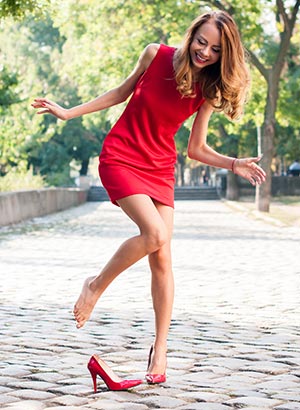
The fashion industry might push style over comfort – be it for high heels or the latest limited-edition sneakers. However, wearing the wrong shoes – for the activity and for your foot type – may potentially result in an injury.
Just how serious could it be? A lack of support and poor fit can, over time, lead to overuse injuries, including plantar fasciitis, medial knee pain, and tendonitis. Injuries, too, may travel up to the hip or back.
Even beyond more serious conditions, poor footwear may be responsible for corns, blisters, calluses, hammer toes, shin splints, aggravated bunions, and Achilles heel injuries. So, if you are to find the “right” shoes, what points should you keep in mind?
First and foremost, find the best fit for your feet. Instead of just going off the size, on the other hand, there are multiple factors to consider:
Have Your Foot Measured
Knowing your shoe size, essentially, is a team approach. Few know how large their feet actually are, so, to start, go to a store with knowledgeable staff – those who will educate customers about foot structure and then measure both feet for the right size and fit.
Multiple factors affect how large your foot may be and consequently how your shoes will fit:
- Age – Your shoe size changes as you age.
- Feet in two different sizes – As a rule, always get a pair that fits the larger foot.
- Your forefoot – This is the widest part, and you should still have some space here.
- Toe box and ball of the foot – There should be enough room for you to wiggle your toes.
- The heel – Your heel should stay in place, rather than slide around.
- The time of day – Toward the end of the day, your feet are usually more swollen.
- Activity – Walking, running, and other physical activities also make your feet swell.
After these factors are taken into consideration, find a pair, try them on to see how they feel, and then walk around a bit. Contrary to popular advice, a quality pair should feel comfortable right away – breaking in shouldn’t be necessary.
Know Your Shape
Comfort, too, is contingent on how your foot is shaped. Typically, those with a low arch require more support through the shoe’s midsection, while a higher shape, known to be more rigid, needs more cushioning and greater shock absorption.
Feet are divided into three basic shapes, with footwear needs varying as a result:
- Neutral Arch – Requires firm midsoles, straight to semi-curved lasts, and moderate rear stability.
- Low Arch or Flat – Because the foot’s natural shape may cause muscle stress and joint problems, shoes should feature a straight last and motion control for better stabilization.
- High Arched – Also straining joints and muscles, this foot shape needs additional cushioning and, if possible, a curved last.
Unsure of your foot’s shape? It’s advised to do the “wet test” – walking in wet feet on a piece of cardboard or newspaper. Your foot’s print will indicate the type of arch.
Consider the Activity
As a basic rule, quality shoes must be able to keep you comfortable when you’re on your feet for long periods. This often means the pair gives a proper fit and supports your body’s joints.
Nevertheless, the activity further comes into play. A standard walking shoe must provide a lightweight yet stiff design with sufficient shock absorption, should evenly distribute your body weight across both feet, and help you adapt to most surfaces. For running, by contrast, the design must offer better flexibility.
Certain sports, too, have specific needs. A football player, for instance, must consider shoes with more forward traction and less rotational traction.
Certain popular styles innately lead to foot problems:
- Ultra High Heels – The wearer is more prone to ankle sprains, chronic pain, a bone deformity at the back of the heel, and hairline fractures. If heels are a must (and for some jobs, this may be the case), opt for a style no more than two inches high; the design is closer to the foot’s natural position and places less strain on the metatarsals.
- Ballet Flats – Heels might not be ideal, but neither is a flat design with no arch support. Wearers are at a risk for hip, knee, and back problems. If you have to wear these shoes, modify them by adding orthopedic inserts.
- Flip-Flops – These shoes come with the same problems as ballet flats and go farther – the feet are fully exposed. Aside from watching your surroundings, consider getting better support from “fit” flops, a style with a thicker, curved sole providing improved arch support.
Additionally, for men and women, it’s advised to avoid pointed-toe shoes, and instead to try a rounded style. As well, stretch materials and lace-up features allow for finding a more comfortable fit.
What happens if you’ve been wearing the wrong footwear and are now facing an injury? Control the inflammation and schedule a comprehensive evaluation for related problems, such as a limited range of motion. Stretching and strengthening the area may be recommended, while athletes may want to consider a balance program.
If you’re considering treatment, to improve your range of motion and restore your balance after years of wearing ill-fitting footwear, contact Integrated Rehabilitation to learn about our physical therapy programs.

